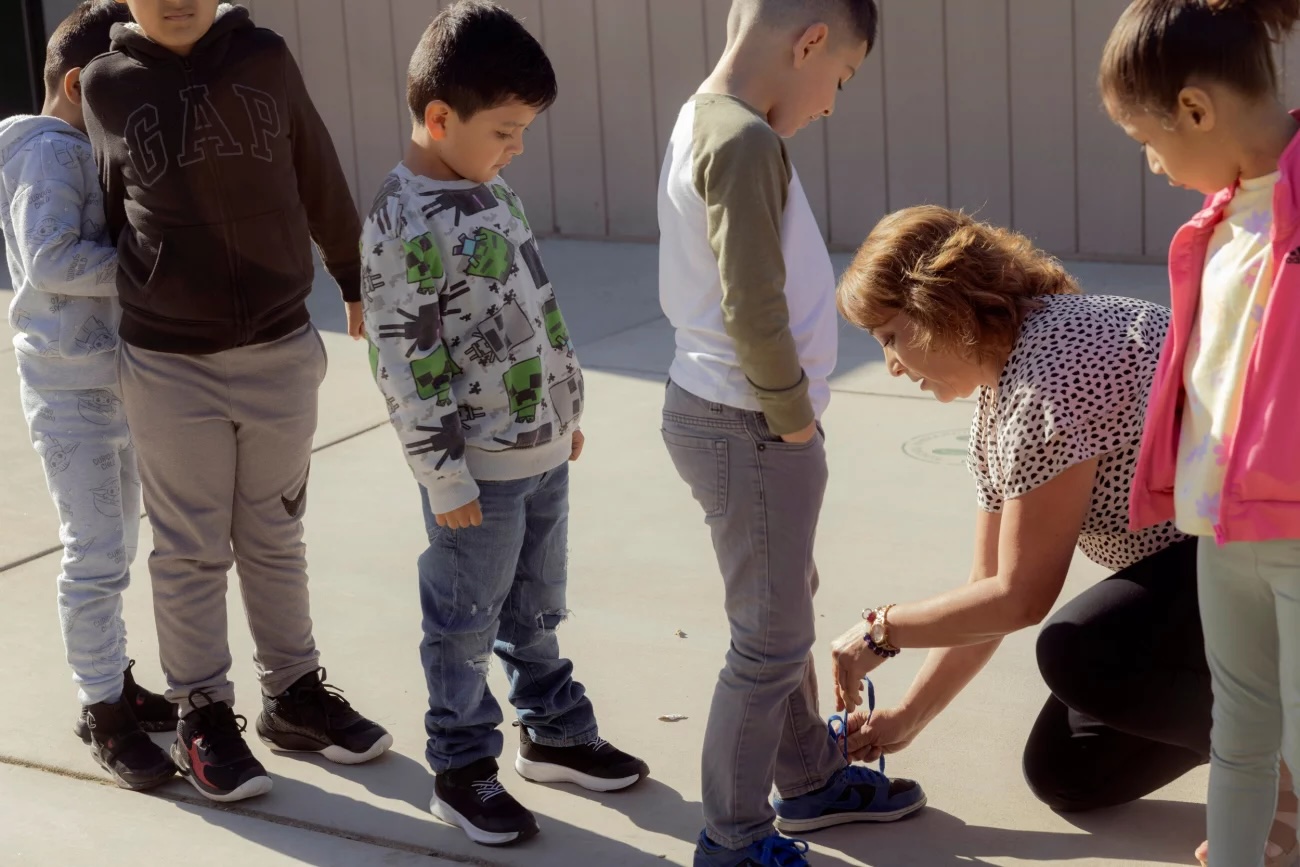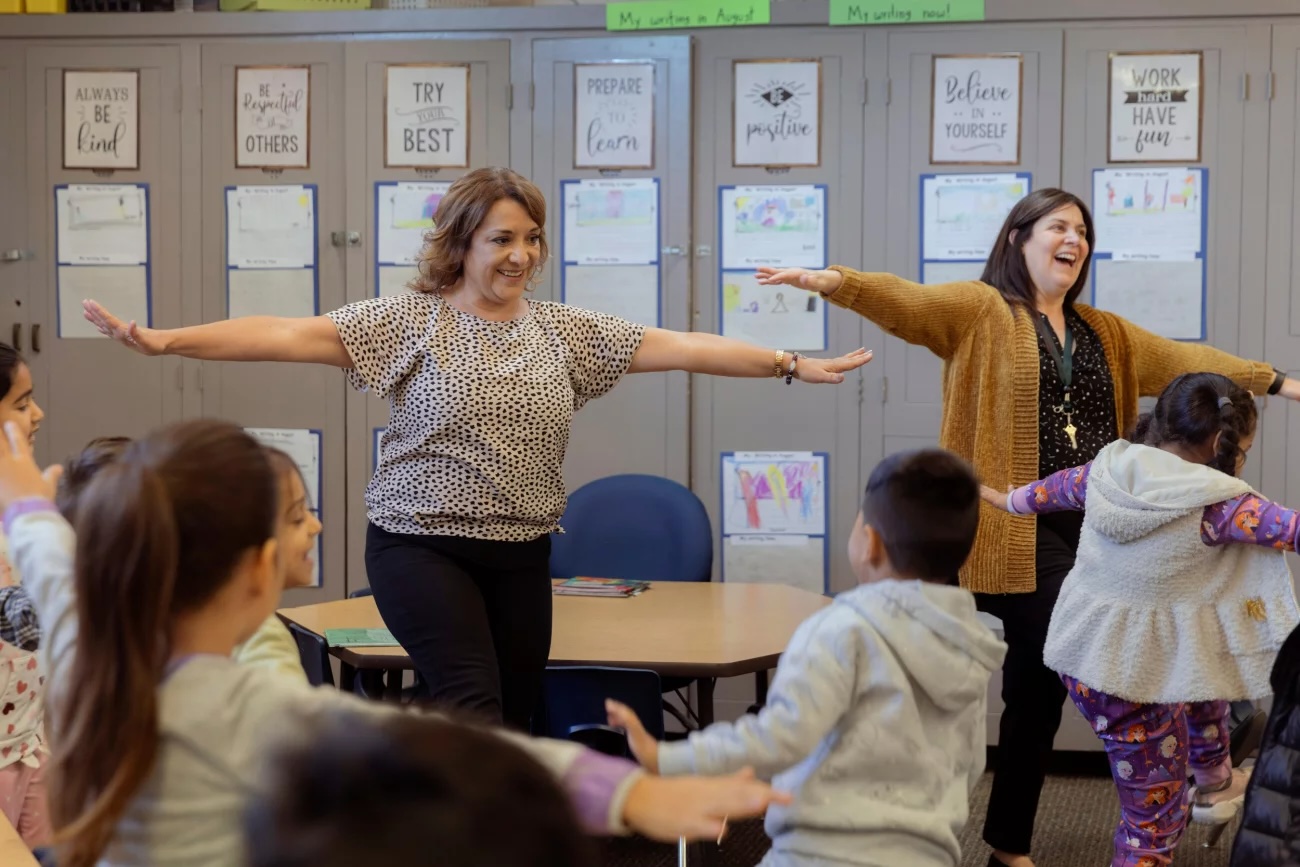In many K-12 schools across the country, an alarming number of children have been chronically absent – an old problem that COVID-19 made much, much worse. To be considered chronically absent, a student must miss at least 10% of the school year, usually around 18 school days. According to an analysis by the American Enterprise Institute, more than 1 in 4 students across the U.S. was chronically absent during the 2022-23 school year.
One of the hardest-hit grades might surprise you: kindergarten.

In California, for example, more than 1 in 3 kindergartners was chronically absent. But the tiny town of Livingston, in California’s sprawling Central Valley, is an outlier – and a powerful lesson in the ways a district can proactively prevent wide-scale absenteeism.
“We were just wowed by what we saw the moment we set foot on Livingston’s campuses,” says Sujie Shin with the California Collaborative for Educational Excellence.
Shin reviewed attendance data for all of California’s roughly 1,000 school districts, searching for solutions to the absenteeism crisis. She noticed Livingston’s kindergarten absenteeism rate was much lower – nearly 10 percentage points lower – than the state average. She wondered what they were doing that was so right?
The short answer is: a lot. Here are three things.
1. Teaching young parents that kindergarten attendance matters
During the pandemic, many parents didn’t send their children to preschool or day care, which means they weren’t forming consistent attendance habits until kindergarten.

“For many families, especially post-pandemic, this is the first time you’re actually sharing the responsibility of nurturing and raising your child with another human being,” says Hedy Chang, who founded the nonprofit initiative Attendance Works. She’s considered one of the smartest people in the country when it comes to understanding chronic absenteeism.
Chang says some kindergarten families simply don’t understand how important it is to be consistent.
“Attendance is a lot about laying down the line and saying, ‘Hey, we’re gonna get my kid to school every day. And I’m gonna partner with my teacher so this is both engaging and we have the supports we need,’” Chang says. “When we have that experience in kindergarten, we lay the foundation for our future.”
The opposite is also true. Chang warns that poor attendance can have a long-term impact. “Chronic absence in kindergarten is associated with not being as likely to read or count proficiently in third grade.”
Mayte Ramírez, a principal at one of Livingston’s elementary schools, will often pick up the phone and call the families of absent kindergartners with a warning: Missing one day of kindergarten is like missing three.
“The day that they were absent,” Ramírez says, “that’s a whole day.” The second day, they may come back, but they’re so busy catching up, they miss new material. “On the third day, they’re still trying to catch up! So they’re missing three days of instruction. And for littles, that’s huge.”

One Livingston mom, Yolanda, says she learned this lesson the hard way. We agreed to only use Yolanda’s first name because it can be hard to talk about absenteeism. She says that two years ago, when her daughter was in kindergarten, Yolanda let her miss a lot of school. Her daughter wasn’t necessarily sick; there were times she simply didn’t want to go. By the time her daughter got to first grade, she struggled with reading and writing.
“I realized I shouldn’t have [let her miss class],” Yolanda says. “Now that I have my 5-year-old [son] in kindergarten, I do not let him miss school. He’s only missed one day. So that he doesn’t struggle like his sister.”
2. Helping parents make sense of pandemic health rules
During COVID, families were often told: If your child seems sick, keep them home.
Now though, absenteeism has become an epidemic, and schools are telling families: Unless your child is really sick (fever, vomiting or diarrhea), they should be in class. It’s a big change, says Rafael Bautista, the father of another Livingston kindergartner.

When one of his kids gets the sniffles, he wonders, “Should I send them to school like that? Or should I just make sure he is fine? You know? And also, I mean, allergies … you don’t know! Our kids get sick very often.”
Livingston has a fix for all this confusion. Her name is Lori Morgan, and she’s the district’s top nurse. She gives families her personal cell number and tells them, if in doubt, call her.
“I was on vacation [recently],” Morgan says with a smile. “I was on the phone and on email with a dozen parents. Yeah, I’m never really off.”
In Livingston, Nurse Lori, as she’s known, tells families they don’t have to decide if their child is too sick for school. Just meet her or a member of her health staff in the school parking lot.
“You don’t even have to get out of the car. Just stay in the car,” Morgan tells families. “We’ll come out and check your child out.”
She may take their temperature, ask a few questions. If a child is truly sick, Morgan says, she helps families get a quick doctor’s appointment at the local health clinic. But, she laughs, “99% of the time they’re well enough to stay.” And so she walks them to class.
In Livingston schools, building relationships with families isn’t a side project. It’s fundamental. And it isn’t just Morgan. Each school site employs a dedicated parent liaison. And at morning drop-off, kindergarten parents are allowed to enter the closed campus and walk their children to a waiting teacher.
“Our families have a close connection to our schools,” says Superintendent Andres Zamora, who is wrapping up his 15th year in Livingston.
3. Making school a place children want to be
Helping parents see the value of kindergarten and understand post-pandemic health rules can boost attendance, sure. But the most important thing schools can do is make sure kids want to be there.
“She is excited for school every morning,” says Erika Zurita, whose daughter is in kindergarten in Livingston. “This spring break, she kept asking me, ‘Are we going to school tomorrow? I miss my teacher, my school, my classmates.’ She loves it.”

How in the world do you do that? Sujie Shin, with the California Collaborative for Educational Excellence, says the research is clear: One of the best predictors of a child’s success in school is how they answer one, simple question.
“Is there an adult at school that cares about you? Yes or no? That’s it,” Shin says. “That’s the question that can tell you everything.”
And in Livingston, Shin says, it’s clear that teachers and school leaders share “this real intense focus on creating and maintaining relationships every single moment possible.”
At her school, Principal Mayte Ramírez waits outside during morning drop-off, the first face many kids see as they emerge from the bus or idling cars. She flits easily between English and Spanish, which puts many families at ease as more than 80% of the district’s children are Hispanic. It’s not uncommon to hear Ramírez call a child “my heart” or “mi corazón.”
When an SUV pulls up a few minutes late, Ramírez finds a little boy in the back seat, folded into a ball of anxiety. He does not want to go to school, and his mother isn’t sure what to do. But Principal Ramírez knows him – and the boy knows her. She opens the rear door, leans all the way in and gently extends her hand to the little boy.
“Come and help me, my love,” Ramírez says.
The little boy unfolds himself, takes his principal’s hand and steps out of the car. Ramírez repays his trust by walking him through the front gates and all the way to his classroom.
On the way, she assures him, “You’re gonna have a great day.”
Audio stories produced by Lauren Migaki




